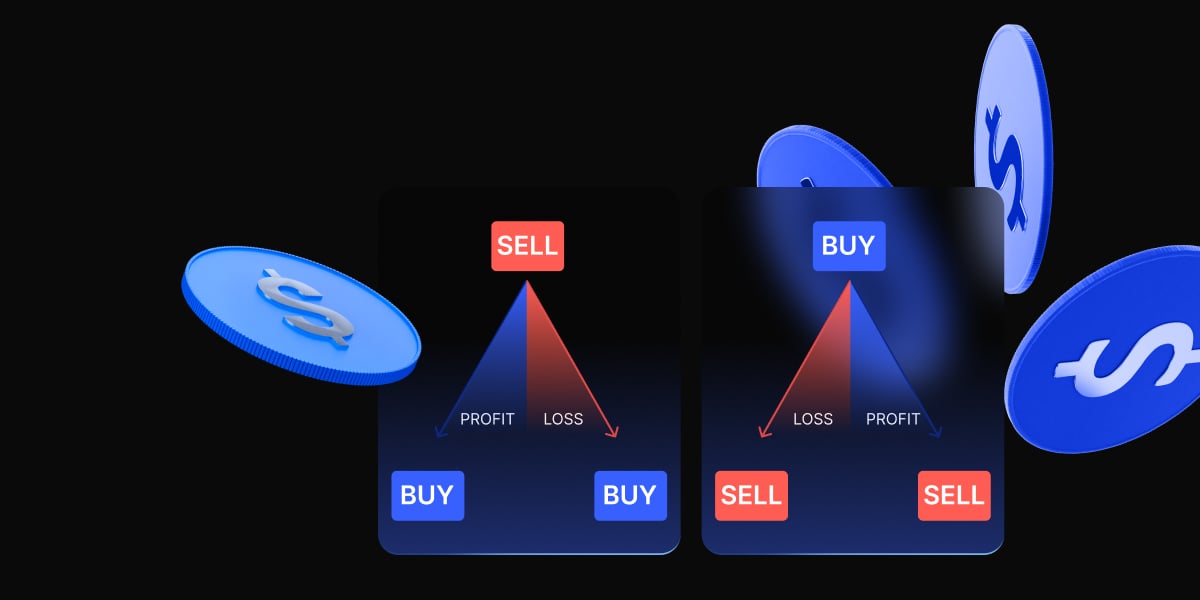In the world of stock market investments, understanding the differences between various trading methods is essential for building an effective investment strategy. One of the most common – and often misunderstood – approaches is delivery trading.
This comprehensive guide explores what delivery trading is, how it works, how it differs from intraday trading, and why delivery trading can be profitable for certain types of traders, especially those with a long-term investment mindset.
Many traders choose delivery trading not just for its simplicity, but because it helps build long-term market understanding and encourages better financial habits.
What is delivery trading?
Delivery trading is a type of stock trading where investors buy and hold shares beyond the same trading day. Unlike intraday trading, which involves buying and selling shares within a single trading session, delivery trading involves taking actual ownership of the shares, which are stored in your demat account.
The investor becomes a shareholder in the company and can hold the stocks for a longer period – days, weeks, or even years – depending on their long-term goals.
Delivery trading requires a demat and trading account to function properly. While intraday trading may rely on margin trading, speculative plays, and fast-paced trading tactics, delivery-based trading focuses more on long-term growth and fundamental and technical analysis.
Many investors prefer delivery because it aligns with long-term investment strategy objectives, especially when market conditions favour holding strong stocks over time. Unlike speculative intraday trades, delivery trades benefit from dividends, bonus issues, and the compounding effect of holding.
Key differences between delivery and intraday trading
Understanding the difference between intraday and delivery trading is crucial to choosing the right investment strategy. Here are the main contrasts:
Time horizon
The holding period in delivery trading spans from days to years, highlighting the difference between intraday and delivery trading, which is completed within the same trading day.
The difference in time horizon significantly impacts the approach to analysing price movements and risk tolerance.
Delivery traders typically wait for the stock price to appreciate over time, while intraday traders buy and sell shares to profit from short-term price movements. This longer period gives delivery traders more room to absorb market volatility and adjust their strategy accordingly.
Leverage and margin
Intraday trading often involves using leverage and margin trade funding, which allows traders to take larger positions than their actual capital. However, this also increases exposure to market risk and requires active monitoring of market movements.
Delivery trading does not use leverage, and the full value of the trade is paid upfront, which is only possible if you have a demat account. Instead, the full value of the trade is paid upfront, making it a more conservative option.
Minimum margin requirements are only relevant to intraday trading, not to delivery. This makes delivery trading suitable for those who want to avoid the risks of margin calls and forced liquidation.
Costs and fees
Intraday trading tends to have lower brokerage fees, but the frequency of trades can increase overall costs. Also, intraday trades attract securities transaction tax (STT) only on the sell side, whereas delivery trading incurs STT on both buying and selling stocks.
In delivery trading, there may be delivery trading charges, such as exchange transaction charges, demat charges, and other associated fees for holding shares. These additional costs mean delivery involves additional costs, including fees for selling stocks, but may be justified by long-term returns and strategic stock selection.
Don’t forget to consider exchange transaction charges, which may seem minor but can affect your overall returns, especially over multiple trades.
Risk and reward profiles
Recognising long-term market risks early helps traders avoid preventable losses. Intraday trading offers the potential for quick profits, but also exposes traders to high market volatility and rapid losses due to short-term price movements. In contrast, delivery trading involves lower risk factors and typically yields steadier returns over time.
For long-term investors, delivery trading is suitable because it’s aligned with their risk tolerance and ability to ride out market trends. Delivery trading depends on long-term macroeconomic and business fundamentals rather than short-term speculation.
While delivery trading is considered more stable than intraday trading, it is not without long-term market risks. These include shifts in economic policy, industry disruptions, inflation trends, and global events that can impact a company’s performance over time.
Recognising long-term market risks early helps traders avoid preventable losses.
When to choose delivery trading
Delivery trading is ideal in scenarios such as:
- Long-term investing with the aim of capital appreciation
- Generating returns through dividends and company growth
- Lower risk tolerance and preference for stable strategies
- Focus on fundamental and technical analysis of stocks
- Aiming for long-term market understanding rather than short-term speculation
- Building a diversified long-term portfolio
- Investing in blue chip or large-cap stocks with a consistent track record
Investors who are comfortable with a longer period of holding stocks and want to benefit from rising stock price trends may prefer delivery-based trading.
When to choose intraday trading
Intraday trading is appropriate for:
- Traders with advanced technical analysis skills
- People who can monitor the stock market in real time
- Investors with high risk tolerance and the ability to make fast decisions
- Traders seeking to profit from short-term price movements
- People who thrive in a fast paced trading environment
- Those using technical indicators like RSI, MACD, and moving averages
Intraday and delivery trading differ mainly in their objectives – while intraday focuses on momentary gains, delivery targets long-term growth and stability.
Advantages and disadvantages of delivery trading
Advantages of delivery trading:
- Actual ownership of shares, stored in a demat account
- Ability to sell shares at any point in the future without a time limit
- Lower stress compared to high-pressure intraday trades
- Suitable for building a long-term investment portfolio
- Beneficial for stock market investments targeting long-term growth
- Opportunity to earn dividends and benefit from corporate actions
- Less need for real-time monitoring
Disadvantages of delivery trading:
- Ties up capital for longer durations
- Subject to broader market risk and company-specific risks
- Delivery trading involves extra fees like demat and delivery trading charges
- Slower returns compared to aggressive strategies like intraday or swing trading
- Requires patience and a buy-and-hold mentality
Despite these challenges, delivery trading can be profitable for those who research thoroughly and have a clear understanding of their financial goals and trading strategies.
How delivery trading works
To start delivery trading, you must open a demat and trading account with a registered broker. Once you buy shares, they are credited to your demat account after the settlement process begins, usually within T+1 or T+2 trading days.
You hold stocks until you’re ready to sell shares, at which point you can execute a trade through your trading account. The profits are realised if the stock price rises over time. All related documents carefully outlining fees and processes must be reviewed before you start.
Delivery trading works best when paired with solid research, disciplined investing, portfolio diversification, and clear financial planning. Many platforms also provide stock screeners and stock market research tools that can aid in selecting stocks suitable for delivery.
Delivery trading doesn’t necessarily require high trading volume to be effective. However, experienced investors often track trading volume as a signal of market interest and momentum, helping them decide the right time to enter or exit a position.
When participating in delivery trading, traders must account for exchange transaction charges, which vary by broker and exchange. These charges, while often small, can add up over time and affect overall profitability.
Delivery trading rules and regulations
Delivery trading follows guidelines set by the Securities and Exchange Board of India (SEBI). These include rules around settlement cycles, disclosure norms, and broker compliance.
You cannot convert intraday trades to delivery at the end of the trading session unless allowed by your broker. Make sure to understand the broker’s rules before placing any delivery trade order.
For patient investors, delivery trading is profitable when combined with strong research and a well-planned entry and exit strategy. Keep in mind that all trades must be executed during official trading hours, which vary depending on the exchange you’re using.
Intraday and delivery: Which is right for you?
Choosing between intraday and delivery depends on your personal objectives. Intraday may suit active traders who are confident in their technical analysis and able to make quick decisions. Delivery is better for those who prefer to hold stocks and wait for long-term growth.
Your decision should consider:
- Capital availability
- Risk appetite
- Time you can dedicate to the securities market
- Familiarity with market volatility and price movements
- Understanding of fundamental analysis and technical trends
- The ability to commit to a long-term investing strategy
Intraday trades must be completed within a single trading session, meaning both buying and selling take place before the market closes on the same day.
Tips for new delivery traders
- Start small and build confidence
- Avoid panic selling during market dips
- Keep an eye on quarterly earnings and industry news
- Use both fundamental and technical analysis to assess opportunities
- Understand all delivery trading rules and brokerage fees
- Choose delivery trading platforms with user-friendly tools and research access
- Diversify across sectors and market capitalisation to reduce risk
The goal is to maximise gains while minimising market risk through informed decisions and strategic holding. Always keep track of trading volume, as it can indicate price momentum and market interest.
How to make delivery trading profitable in the long run
To make delivery trading profitable, focus on stocks with strong fundamentals, monitor trading volume closely, and avoid emotional decisions driven by short-term market movements. Understanding long-term market risks and planning entries around a single trading session can also improve your returns over time.
Once you’ve placed your trade, the settlement process begins, and your shares will be transferred to your demat account.
Conclusion: Delivery trading for long-term success
In conclusion, delivery trading is ideal for investors aiming for sustainable long-term investment returns. While it requires patience and discipline, the potential for long-term growth makes it attractive for many.
If you’re considering stepping away from the pressures of same-day trading and looking for a more stable path to grow wealth, delivery trading could be the right fit. With the right delivery trading strategy, supported by sound research and financial discipline, it’s possible to build lasting wealth in the stock market.
Trading involves risk.
Which is better, delivery or intraday?
That depends on your goals. If you want fast profits and can monitor charts throughout the trading day, go for intraday. If you’re in for the long haul, prefer stability, and focus on value, delivery may be better.
What is an example of delivery trading profit?
Suppose you buy 100 shares at ₹500 and hold them for a few months. If the stock price rises to ₹600 and you sell, you make a profit of ₹10,000 minus brokerage fees and taxes.
What is the difference between swing trading and delivery trading?
Swing trading typically focuses on short-term price movements over a few days or weeks and uses both technical and fundamental analysis to identify entry and exit points. Delivery trading, on the other hand, involves holding stocks for a longer period and is mostly driven by fundamental analysis.
Is delivery trading good for beginners?
Yes, delivery trading is generally considered beginner-friendly because it does not require constant monitoring of markets. It allows new traders to focus on long-term gains and learn about market fundamentals over time.
Engaging in delivery trading helps new investors develop long-term market understanding, teaching them how to evaluate company fundamentals and broader economic trends over extended periods.
Can I do delivery trading without a demat account?
No, a demat account is mandatory for delivery trading. It holds your shares electronically after you buy them. Without a demat account, you cannot take delivery of shares in the Indian stock market.
How long can I hold shares in delivery trading?
There’s no time limit. You can hold your shares for as long as you want – weeks, months, or even years – depending on your investment strategy and financial goals.
Are there any charges for delivery trading?
Yes, delivery trading involves brokerage charges, Securities Transaction Tax (STT), GST, stamp duty, and other regulatory fees. However, some brokers offer zero brokerage on delivery trades to attract long-term investors.
Can I convert an intraday trade into delivery?
Yes, many platforms allow you to convert an intraday position into delivery before the market closes. However, you need to ensure you have sufficient funds and a valid demat account for the conversion.
What is the risk in delivery trading?
The main risks include market volatility, poor stock selection, and economic downturns. Since delivery trading is long-term, price corrections or company-specific issues can affect your returns if not managed properly.
Can I do delivery trading every day?
Technically, yes. You can buy stocks every day and hold them. But it’s important to research each stock carefully, avoid overtrading, and ensure you have enough capital to manage multiple open positions.
Unlike swing trading, which focuses on short-term market movements and quick profits, delivery trading is more suited to investors looking for gradual, long-term value appreciation.
The content provided here is for informational purposes only. It is not intended as personal investment advice and does not constitute a solicitation or invitation to engage in any financial transactions, investments, or related activities. Past performance is not a reliable indicator of future results.
The financial products offered by the Company are complex and come with a high risk of losing money rapidly due to leverage. These products may not be suitable for all investors. Before engaging, you should consider whether you understand how these leveraged products work and whether you can afford the high risk of losing your money.
The Company does not accept clients from the Restricted Jurisdictions as indicated in our website/ T&C. Some services or products may not be available in your jurisdiction.
The applicable legal entity and its respective products and services depend on the client’s country of residence and the entity with which the client has established a contractual relationship during registration.




